University Administration Building
701 S. Nedderman Drive, Ste 421
Arlington, TX 76019-0116
A Walk in the Park
Two graduates of UTA’s architecture and landscaping programs are shaping Texas’ newest state park.
By Linsey Nazir
When the Texas Central Railway Company laid 177 miles of steel track from Ross to Albany, Texas, in the late 19th century, new towns sprouted across the wild hazel prairies of Eastland and Palo Pinto counties. Farmers and pioneers flocked to the railway, settling nearby for easier access to transportation, supply centers, and work. The soil in Strawn, Texas, established in 1880, was rich with oil to fuel the bordering railroad, and local miners supplied the railway with millions of tons of the black gold. Skilled workers were in high demand, and by 1920, the mines’ payrolls totaled $75,000 a month.
Nearly 150 years later, the economic boom provided by the railroad has faded, and Strawn’s population hovers at less than 600 residents. What the city lacks in bustle it more than makes up for in beauty. On the drive north on State Highway 16 in the early days of summer, vast grassy fields introduce the Palo Pinto Mountains, a 15-mile stretch of sandy oak- and juniper-covered peaks leading to the Brazos River. Four miles west of downtown Strawn, you can still spot where trains cross one of the range’s shallow canyons on a wooden trestle bridge dating back to the railroad’s earliest construction. A 10-minute walk from there, the sapphire waters of Tucker Lake rest in the shadows of surrounding summits.
“It’s such a beautiful part of the state,” says James Adams (’17 MPA) superintendent of the forthcoming Palo Pinto Mountains State Park. “I can’t wait for people to see it.”
Adams sees the spot as one of Texas’ best kept secrets. Much of the land was privately owned until recent purchases by the state of Texas secured 4,871 acres for public use. Now, the state plans to convert it into a park. When it opens, Palo Pinto Mountains State Park will be the state’s 89th and the first to open in North Texas in more than 25 years.
Opening a state park is a years-long process involving massive teams comprising experts in everything from botany to architecture. It takes a maverick to lead a project of this magnitude. As a graduate of The University of Texas at Arlington’s master’s in public administration, Adams is just the man to do it.
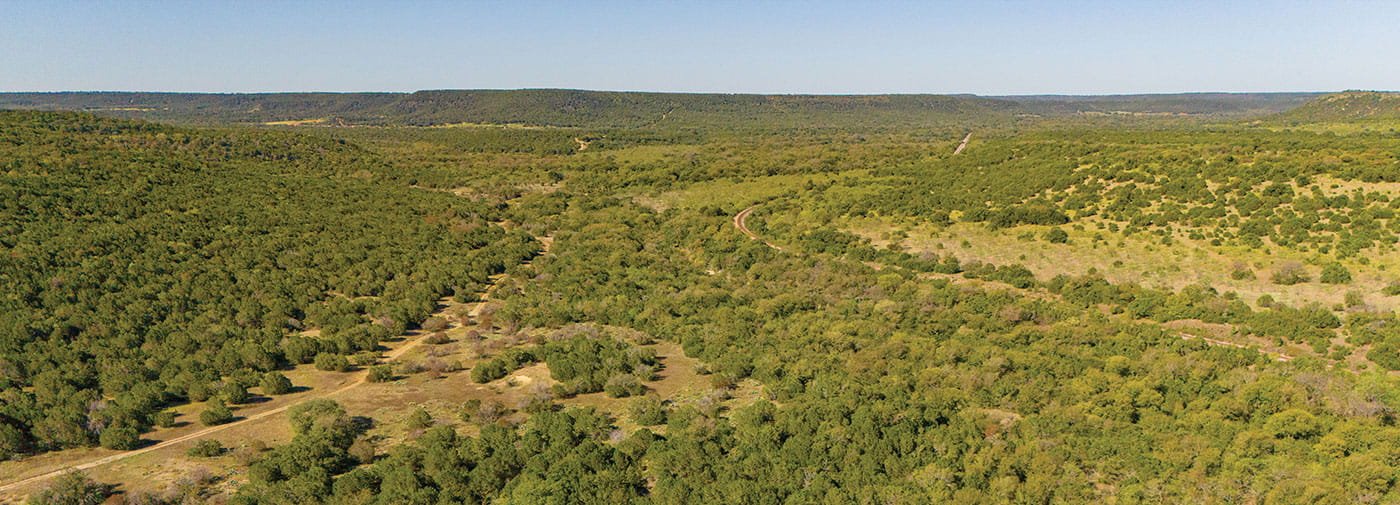
A Humble Leader
Since he was young, Adams has had a heart for public service. In his early career, he worked in the criminal justice system. While he enjoyed the administrative aspects of his job, he didn’t feel like his role allowed him to help people as much as he wanted. That’s when his focus shifted to job opportunities in parks and recreation. His first position with Texas Parks and Wildlife Department (TPWD) was as a maintenance specialist at one of the state’s biggest parks, Cedar Hill. It wasn’t the most glamorous job, but Adams was pretty sure he’d found his new career path.
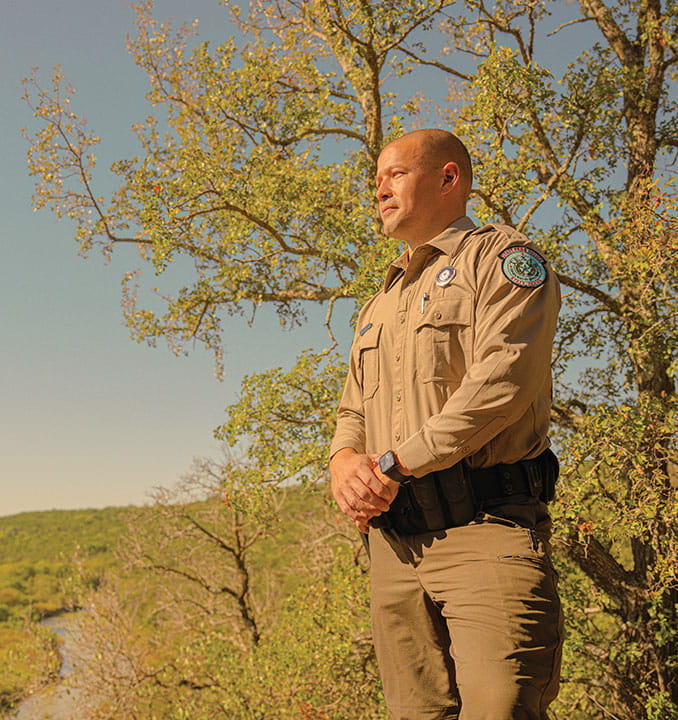
“Nobody goes into parks and recreation thinking this is how they’re going to make their fortune,” Adams says. “I had decided I was going to pay my dues and work my way up the old-fashioned way.”
That humble attitude surely helped Adams along the way as he was quickly promoted from maintenance specialist to park police officer at Enchanted Rock State Park, then assistant superintendent at Lake Arrowhead State Park, and finally superintendent of Cooper Lake State Park. As his career skyrocketed, Adams returned to school looking for new skills to help him manage his growing responsibilities.
“I was looking for a degree that would be beneficial to me with a curriculum that I could apply every day at work,” Adams says. “UTA’s master’s in public administration was exactly what I needed. It was accessible, allowed me to work and go to school at the same time, and gave me the skills to succeed.”
The program, housed in the College of Architecture, Planning, and Public Affairs, provides unique opportunities in planning, economic development, and urban design studies in the North Texas region. Students receive hands-on experience during real-world projects that complements their classroom learning. When students graduate, they are ready to tackle high-stakes public decision-making with the goal of delivering public services ethically, democratically, and effectively.
After seven short years with TPWD, Adams got the call that he’d been selected as superintendent of North Texas’ newest state park. It was a once-in-a-lifetime opportunity. He packed up his family and moved from Cooper Lake to the superintendent’s home in Strawn.
Adams describes the job as being similar to that of a city manager running a small city. Superintendents manage the water systems, maintain fiscal responsibility, and work to ensure the safety of every visitor, among countless other duties. At Palo Pinto Mountains State Park, there’s an additional challenge: The park isn’t open yet.
“I’ve never opened a state park before. Not a lot of people have,” Adams says. “It’s been so long since TPWD has done this. It’s important for me to get my colleagues’ feedback and ask them what else I should consider during this process.”
“The most important thing is giving people access to the park so they can see the beauty of the location and grow to love it.”
Adams affirms that in the middle of the largest and most complex project he’s ever worked on, he relies on the skills he learned at UTA.
“My master’s in public administration prepared me well,” Adams says. “It was all tremendously helpful, from governmental relations to human resources to law classes to public budgeting. I use all of that.”
He’s also experienced a big learning curve. Before he started this project, Adams had never read a set of blueprints, or built a road, or designed a building. The amount of knowledge he’s had to acquire in other disciplines has been daunting at times, he admits.
“I walk into a room filled with architects, landscape architects, civil engineers, electrical engineers, and all of these really sharp people,” he says. “Sometimes I ask myself what I’m doing there.”

Preserving Natural Beauty
But Adams has found friendly faces among his colleagues and project partners. Michael Bennett (’83 MArch), principal and chief executive officer of Bennett Partners, is the lead architect for the park and a fellow UTA alumnus.
When Bennett learned that his firm would lead the park’s design, one of the first things he did was hike around the land. He and his team examined the area’s geology and studied the color of its rocks and trees.
“My goal is for the buildings to feel like they belong in the park,” Bennett says. “Our surveys help us select materials and design building forms that complement the landscape. In this way, we make the place accessible without destroying it.”
Preservation is more than a professional obligation for Bennett. As a boy growing up in nearby Ranger, he would camp with his family at Wiles Canyon not far from the park’s boundaries. Bennett says coming back to the land as an adult to steward its development has been satisfying.
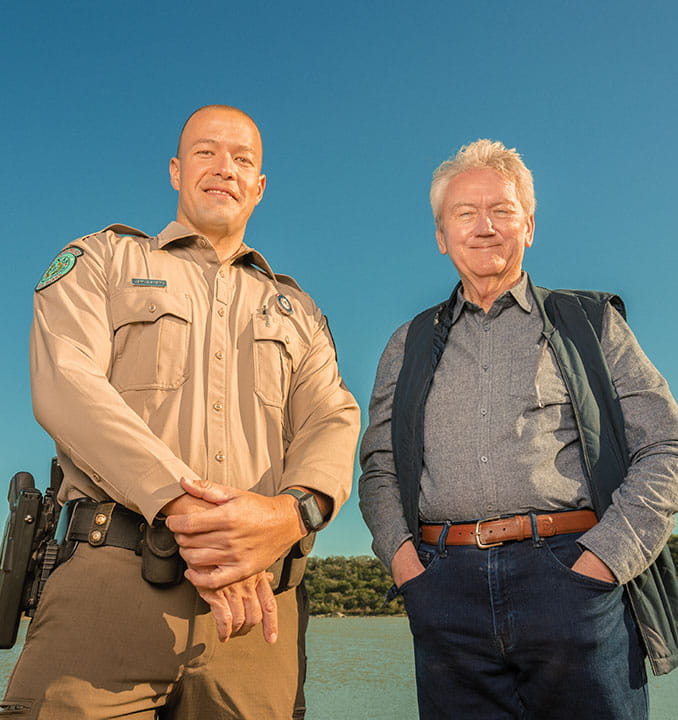
“It’s very meaningful to be able to go back to a place where you spent a good bit of time as a kid and invest in securing its future,” he says.
As the park’s designer, Bennett carefully navigates changes to the land. He considers where to add roads, camping spots, and other amenities without leaving too much of a mark.
“The most important thing is giving people access to the park so they can see the beauty of the location and grow to love it,” Bennett says. “If they love it, they will want to preserve it too.”
Bennett partners with specialists from TPWD to protect the park’s natural and cultural history. Archeologists, geologists, and scientists collaborate to study the land and identify vulnerable areas where construction should be restricted. Research has uncovered a prehistoric fire pit that dates back roughly 3,500 years, a Paleo-Indian point that is about 10,000 years old, and a nearly intact rock oven that was built by railroad workers in 1880 to feed the masses when the Texas and Pacific Railway was being built.
The railway intersects with the northern border of the park. On a busy day, 15 to 20 trains charge through the canyons. Some people may think of the trains as a noisy distraction, Bennett says, but it’s a true part of the site’s history.
As he looks to the park’s opening, Bennett hopes it helps people become aware of the value of open space and nature.
“This is one of the most gratifying jobs I can imagine,” he says. “I’m really looking forward to seeing people out in the park enjoying nature and learning to love it in a different kind of way.”
Park Progress
Plans for the park include 32 miles of multiuse trails for hikers, mountain bikers, and horseback riders leading to remote areas of the park with beautiful views. On Tucker Lake, visitors will be able to fish, boat, swim, and birdwatch. Campsites will include large parking areas for recreational vehicles, as well as walk-in tent sites and primitive camping grounds.
When asked about his vision for the park, Adams brings up accessibility over and over again. With a smile on his face, he describes how Palo Pinto Mountains State Park will be one of the most accessible parks in the state, featuring off-road wheelchairs for trail exploration and accommodations that not only follow the letter but the spirit of the Americans with Disabilities Act.
Many of Texas’ parks were built by the Civilian Conservation Corps in the 1930s when accessibility wasn’t a priority. Since then, TPWD has implemented accessibility upgrades across its parks. At Palo Pinto, Adams and his team had the chance to integrate accessibility into its design and amenities from day one.
“This park is for everyone,” he says proudly. “More than 95% of Texas land is privately owned and off-limits to the public. We’re so excited to share Palo Pinto’s rich natural and cultural history with all our visitors.”
“This park is for everyone.”
As a watchful guardian of rare public land in Texas, Adams presides over every inch of the park’s progress. At the same time, he looks ahead to the impact the park’s opening will have on Strawn, his new hometown.
An economic impact study commissioned by TPWD reports that state parks contribute significantly to the economic development of their host communities in dynamic ways. Apart from visitor spending, state parks improve air and groundwater quality, assist with flood control, and enhance local real estate values. In rural areas, state parks are major economic drivers, providing jobs and attracting visitors whose spending creates income and jobs in nearby communities.
“We estimate the park could receive 75,000 to 100,000 visitors each year,” Adams says. “They’ll be buying groceries, gas, camping supplies, fishing gear, and more.”
Similar to the early days of the railroad, the new park promises to attract hundreds of thousands of visitors, create local jobs, and boost economic activity for Palo Pinto and surrounding counties.
“This park will provide immeasurable benefits to its visitors and the North Texas region,” Adams says. “That’s what the mission of TWPD is all about, to manage and conserve natural and cultural resources and promote the vitality of present and future generations.” UTA
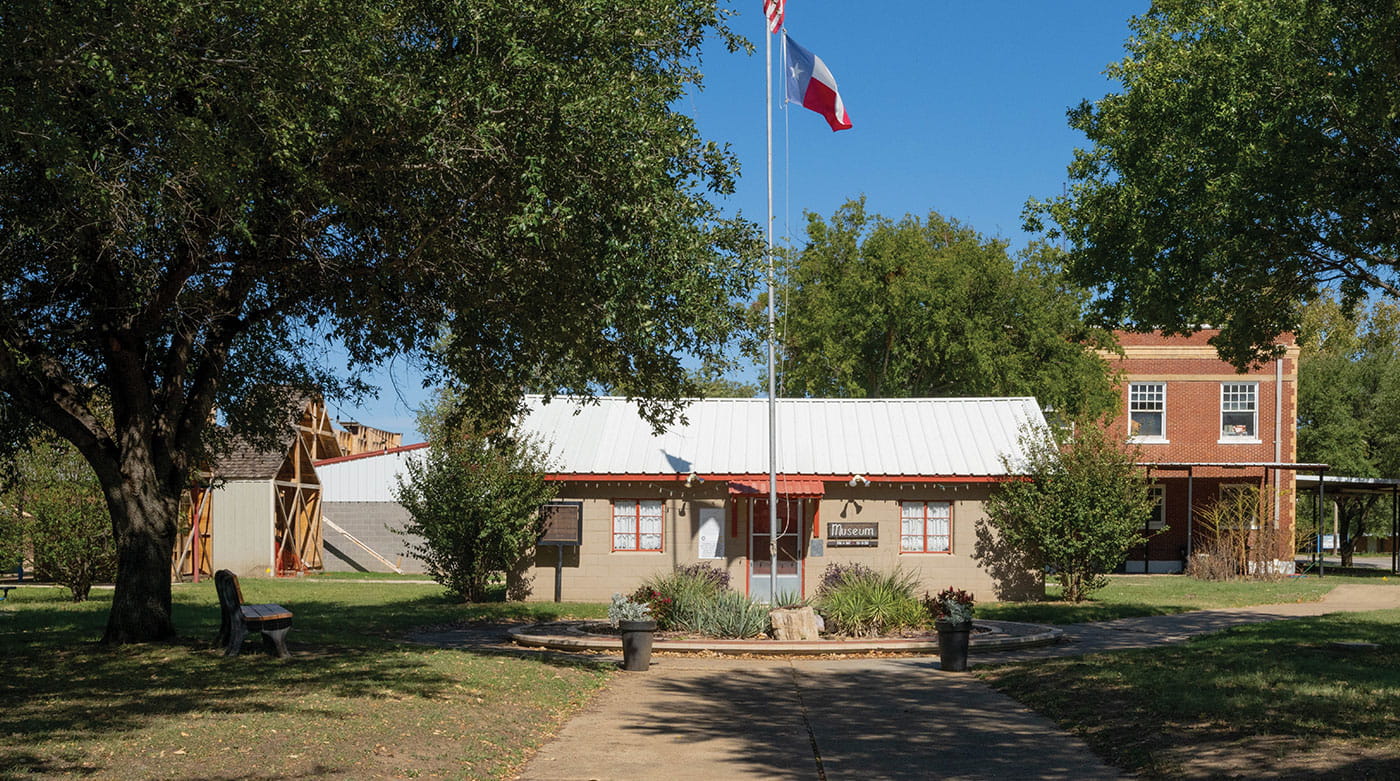
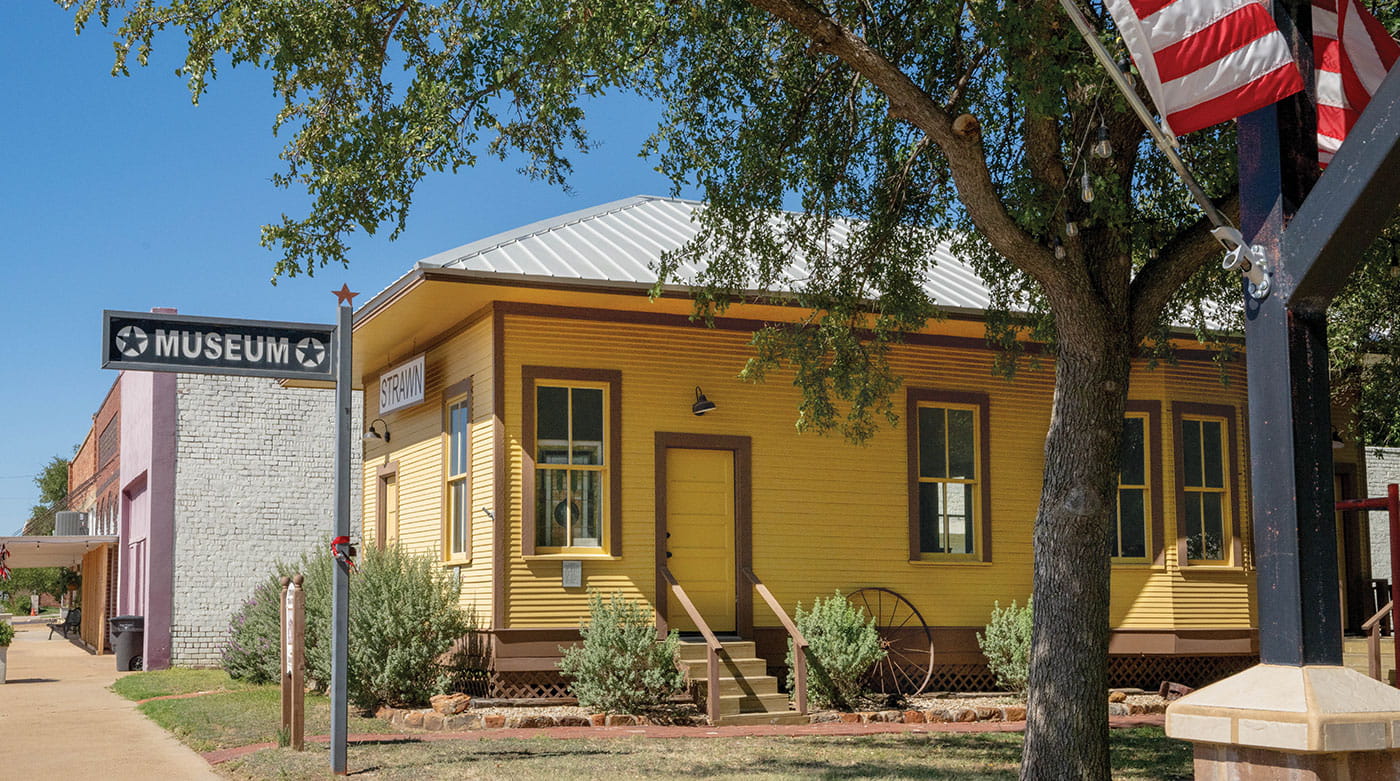

You Might Also Like

The Ruff-est Bar in Texas
Every good businessperson needs a guiding mission. Leslie Paetschow (’12 BA, Anthropology) has a good one: She wants to “pet all the dogs.” Every day at The Watering Bowl, an outdoor dog park and bar that she owns and operates in South Austin, is an opportunity to do just that.

Unlocking the Universe
The planetarium at The University of Texas at Arlington has received a $50,000 gift from Women Inspiring Philanthropy (WIP), a community of women seeking to transform the city of Arlington through high-impact giving.

Well Read
Dive into fascinating books by Maverick authors.